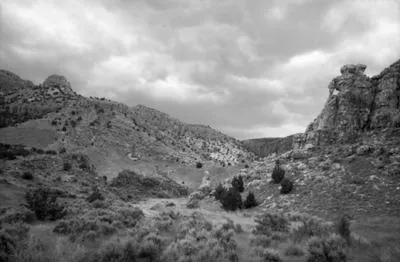
When Portland photographer Terry Toedtemeier passed away in late 2008, he left behind an accomplished body of work not only as an artist, but also as a historian and curator. In fact, the work for which he is best known -- "Wild Beauty," a photographic history of the Columbia River Gorge -- triangulated around these passions, becoming a book co-edited with John Laursen and an exhibit at the Portland Art Museum.
In 2013, the museum, where Toedtemeier served as curator of photography from 1985 until his passing, will launch a retrospective and provide an opportunity to reflect on the lifetime of one of the state's most visionary chroniclers. For now, "Unfinished Business," at PDX Contemporary, offers Toedtemeier's last works -- only a handful of which were printed by the photographer before he died.
Apart from a few older photographs taken in eastern Oregon, the work in "Unfinished Business" was largely shot beyond state lines, during travels to coastal Maine and the American Southwest, including Walter De Maria's "Lightning Field" in Western New Mexico. Still, these black-and-white pictures are filled with the same seductive properties that mark his close-to-home output: rhythmic passages of light and shade and geologic formations that suggest a sculptural dimension. "Untitled (between Flagstaff and Tuba City" from 2005 offers a fairly pedestrian image of a rural road disappearing into the horizon. But Toedtemeier focuses on a seam in the roadway, which literally disrupts the continuity of the lane's center line. That formal hiccup cleaves the shot in two and draws out the symbolic tension between the earthbound pavement in the foreground and the dramatic sky above it.
In "Rock Cairn (shot-up bucket), Malheur County, Oregon," an older inclusion from 1994, Toedtemeier focuses his lens on a man-made structure: a makeshift target, in which bored, rural thrill-seekers have crowned a precarious stack of stones with a metal bucket. Clearly, he was drawn to the itinerant structure in formal terms: the slipshod arrangement of rocks, the bucket stippled with bullet holes. But the makeshift nature of the target was his subject, too. And like any great photographer, that appreciation of the ephemeral allowed him to see the mythic disguised in the incidental.
-- John Motley